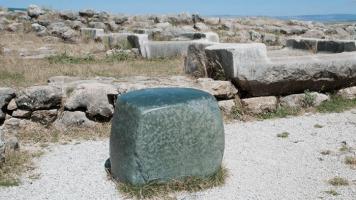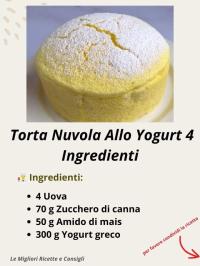Copy Link
Add to Bookmark
Report
HOMEBREW Digest #0108

HOMEBREW Digest #108 Fri 24 March 1989
FORUM ON BEER, HOMEBREWING, AND RELATED ISSUES
Rob Gardner, Digest Coordinator
Contents:
conf fees, CI$, SG, refrigs ("1107-CD&I/VIRUS DISEASES")
Refrigerators for brewing (Michael Bergman)
Second refrigerator (Darryl Richman)
re: Lager yeasts (Darryl Richman)
Regional Conferences and Competitions (Mike Fertsch)
Meads (additives) and also an old recipe (Michael Bergman)
Send submissions to homebrew%hpfcmr@hplabs.hp.com
Send requests to homebrew-request%hpfcmr@hplabs.hp.com
----------------------------------------------------------------------
Date: 23 Mar 89 07:24:00 EST
From: "1107-CD&I/VIRUS DISEASES" <henchal@wrair.ARPA>
Subject: conf fees, CI$, SG, refrigs
1. RE: Conference costs. Ok, you convinced me that a small
society has to charge a slightly larger registration fee in order
to meet the expenses of a national conference, but I won't be
able to go at that price...so I'll have to settle for the $18.95
transcript for another year. Perhaps, what this tells us is
that there is a real need for more regional conferences. For
example...I know that there are lots of homebrewers in the
Washington DC area but I have never heard of a local competition.
The only one that I know of in this region is a competition held
sometimes in Philadelphia in the Fall. Will someone out there
correct me if I am wrong about this? What does it take to
organize an AHA sponsored competition or conference...besides
bucks? Also, can it be done cheaply? I notice that this stuff
seems to go on all the time in California and the Southwest.
2. I predict that the COMPUSERVE....CI$ (I like it)...forum will
fail. I have been a member of CI$ for almost 8 years, and it
ain't hard to run up $50-100 monthly bills using a forum
regularly. Even though I am pessimistic about the forum, I will
heed Steve Conklin advice and try to participate overthere more
frequently. I suggested some time ago that it would help if
summarized portions of the discussions held here be transferred
to libraries at CI$. Mea cuppa, mea cuppa...I didn't follow
through because of the lack of real action in the WINEFORUM.
With regard to letting Charlie know about how I feel....wouldn't
it be easier if he could just listen in....after all, I'm not
sure I know how to get messages to folks not in any kind of
network or bulletin board....I remember vaguely something about
envelops and stamps :-).....Many thanks to Dave Dunn for his
instructional comments about network addresses. I never really
understood what happens to my messages after they leave my
machine.
3. RE: Specific gravity measurements. I'm not sure that the
final FG that you obtain is any measure of the time to bottle.
I had been taught (and experience has shown) that a brew is ready
to bottle when the SG remains constant over the course of 3 days.
(In reality, I don't test the SG that often...I merely look at
the amount of overall activity and the head...a falling head is a
good measure of a completing fermentation.) That FG might be
1.006, 1.015, 1.025 (or whatever) depending upon the amount of
non-fermentable dextrins in the beer. I noticed that Nancy
Vineyard recommends the use of Clintest paper strips (?) in this
quarter Zymurgy. I think her recommendation has always been to
measure the amount of sugar left in the ferment. If I'm not
mistaken the amount of fermentable sugar should be less than
2%...don't hold me to this number.
4. RE: Danish lager Yeast. Is this what they call #2007 or is
this #308. Can someone post the different characteristics of
these yeasts. I have never seen this information
anywhere...growth characteristics, expected attenuation, optimum
growth characteristics, etc.
5. RE: Refrigerators. My refrigerator (15 cu ft) keeps to 49
degrees F on the DEFROST setting and 29 degrees F. No, I can't
use the freezer with the DEFROST setting on. If I don't set the
'frig to defrost, the box stays a pretty constant 44 degrees F.
Erik A. Henchal
<Henchal@WRAIR.ARPA>
------------------------------
Date: Thu, 23 Mar 89 11:01:56 est
From: Michael Bergman <bergman%medusa.m2c.org@RELAY.CS.NET>
Subject: Refrigerators for brewing
Most refrigerators have only a single thermostat, and no way of
independently regulating freezer and refirgerator temperature. Some
modern refrigerators have, still with a single thermostat, a degree of
control in that you can adjust how much of the "cold" is sent to the
freezer compartment and how much to the fridge. In particular, I had
a 10 year old Sears Coldspot (made by Whirlpool, I believe) that had
all the cooling capacity in the back of the fridge, and a fan that
moved cold air around the fridge and freezer compartments. You could
adjust the percentage of cold air going to each, and adjust the master
thermostat, to get something like what you are after. I don't know
whether it was flexible enough to do what you want, but suspect that
the addition of an after-market baffle (i.e. a piece of cardboard
taped over the vent) would have been sufficient to do the trick.
Note that the freezer compartment was a separate insulated box,
totally disjunct from the fridge compartment except for the vent--this
was a "side-by-side" model.
--mike bergman
bergman@m2c.org
------------------------------
Date: Thu, 23 Mar 89 06:17:33 PST
From: Darryl Richman <darryl@ism780c.isc.com>
Subject: Second refrigerator
From: lbr@gatech.edu
"My wife is considering buying me a second refrigerator for my birthday
Happy Birthday!
"The units she's looked at are your basic top/bottom refrigerator/freezers.
"This should give me plenty of room in the refrigerator part. I'm a little
"concerned about temperature, though. Miller and Noonan say ferment in the
"45-55 degF range. Most refrigerators are set to maintain the low 40s.
"Is the fridge's thermostat likely to hold 50, or will it require the
"external on/off timer that some writers mention?
Most refrigerators try to hold the temperature in the high 30s. It is
usually not possible to set the thermistat for more than a bit above
40.
When I first got my refrig, I used an appliance timer to approximate
50. This seems to work alright, although many writers say that
temperature cycling is bad for your beer.
Now I also have a chest freezer. I hooked the power cord into a
deli-case thermistat, which I mounted on the front of the unit. It has
a long capillary tube with a bulb at the end, and this drapes over into
the freezer compartment. This is the way to go.
Another local brewer has made a heat exchanger out of an old window air
conditioner. He set it up to cool water, and he pumps the water
through a series of plastic trashcans, each one containing a carboy.
This is actually a better setup because it is expandable to whatever
brewing scale you might work at.
"Ideally, I'd like to use the refrigerator for fermentaion and maybe lagering
"(lower 30s), and the freezer as a mini deep freeze (otherwise it's just
"wasted). Is this feasible, or does the 50 degF ferment preclude using
"the freezer? (This is a big selling point to my wife.)
The answer, of course, is it depends. I have been able to use the
freezer to keep my hops and 4 extra trays of ice cubes, but when you
are trying to set the timer, you can miss high and nothing will stay
frozen. Once you get a feel for what timer setting works, you should
be able to use the freezer (until a heat wave comes along...).
Before you actually store something in the 'fridge, fool with the timer
a bit to find the tmeperature, and how much of an adjustment in time
changes the temperature. Remember that your fermenting beer is
exothermic, so you'll have a mini heat wave going on inside as well as
out.
--Darryl Richman
------------------------------
Date: Thu, 23 Mar 89 06:32:16 PST
From: Darryl Richman <darryl@ism780c.isc.com>
Subject: re: Lager yeasts
From: Rich Simpson <paramax!simpson@multimax.encore.com>
"[...] I ferment in my basement so I can never depend
"on getting really cold temperatures. Papazian has a bunch of recipes
"that look interesting that I have been avoiding because they use lager
"yeasts. How important is it to ferment beers made with lager yeasts at
"really low temperatures? Will I get good results at 60-65 degrees with
"a lager yeast or should I just stick with ale yeasts?
You can get good results, but likely the style of beer you are making
will change from lager to steam beer. The purpose of lagering is to
get the yeast to slow down and take their time about eating, not
to rush through it and wolf their food down ;-). In doing this, the
yeast work more efficiently and leave fewer by-products behind, which
means that you taste less fruitiness &c in the beer. This is why
lagers are considered to have a cleaner, crisper flavor than ales.
Lagering also facilitates the removal of haze, and you get a clearer
beer. So you can ferment them at higher temperatures, but they will
act and taste more like ales.
--Darryl Richman
------------------------------
Date: Thu, 23 Mar 89 13:10 EST
From: Mike Fertsch <hplabs!uiucdcs!meccad.RAY.COM!FERTSCH>
Subject: Regional Conferences and Competitions
> Perhaps, what this tells us is
> that there is a real need for more regional conferences. For
> example...I know that there are lots of homebrewers in the
> Washington DC area but I have never heard of a local competition.
> The only one that I know of in this region is a competition held
> sometimes in Philadelphia in the Fall. Will someone out there
> correct me if I am wrong about this? What does it take to
> organize an AHA sponsored competition or conference...besides
> bucks? Also, can it be done cheaply? I notice that this stuff
> seems to go on all the time in California and the Southwest.
Back in the 1983-1985 time frame (have I been really brewing THAT long?)
the AHA ran a series of local regional conferences. They were one-day
affairs, with lots of information, lots of comraderie, and lots of beer. I
attended the three 'annual conferences' in Massachusetts, and thought them
to be well worthwile. The cost was around $50. I felt it was a bit steep,
but since there were no hotel or airline charges, I splurged. The better
sessions were flavor perception talks (doctored beer to demonstrate
particular flavors), mashing basics, and equipment discussion. Somewhere
between 100 and 200 brewers attended the conferences.
I know that Charlie P ran these things all over the country. I recall a
conference in DC, in Philly, and other US 'brewing capitals'. In 1986 (I
think), the AHA stopped the regional conference program. I asked Charlie P
and he indicated that the AHA was losing money on the conferences - the
attendance was just too low. That's too bad -- I think the AHA should
reinstitute the regional conferences - maybe every other year would be
appropriate.
With regard to competitions, there are lots of local competitions
'sanctioned' by the AHA. The "Calendar of Events" in the front of Zymurgy
lists some of the major ones. There are others that don't make it into the
magazine - call the AHA and ask them if they know of any in your area. In
New England we have four regional competitions each year. (The next one is
April 1). In Philly there are two events, one in the Fall and one in the
Spring. There is a competition in Philly on April 2 (E-mail me a note if
you want more info). There is another one in Troy, NY on April 2. I
don't know about the DC area.
If you want to run a competition or a conference, call the AHA. Although
they do not sponsor regional competitions, they have a program which
'sanctions' certain competitions. In general, just tell them the
categories you will have, the estimated number of entries, and the
experience level of your judges. As part of the "sanctioning", the AHA
maintains lists of 'qualified' judges who passed a test and have judging
experience. Other people on this net (are you still there Jay?) who can
tell you what it takes to orgainze and run a sanctioned competition.
- mike fertsch
fertsch@meccad.ray.com
fertsch%meccad.ray.com@a.cs.uiuc.edu
------------------------------
Date: Thu, 23 Mar 89 15:38:29 mst
From: oscar@hpdmmad
I would like to be able to read stuff in your homebrew
digest. How do I go about it ? notes ?
oscar herrera
oscar@hpdmmad
Disc Memory Division
Boise Idaho
------------------------------
Date: Thu, 23 Mar 89 19:55:45 est
From: Michael Bergman <bergman%medusa.m2c.org@RELAY.CS.NET>
Subject: Meads (additives) and also an old recipe
This got lost in some mailer problems, so it may seem like a bit of a
non-sequitur. Worse still, it may have gotten out and me not realized
it, in which case it will be a duplicate. Let's all cross our fingers.
> Date: 03 Mar 89 12:03 -0330
> From: <mhalley%MUN.BITNET@CORNELLC.ccs.cornell.edu>
...
1! Any damn-fool mead maker knows better than to BOIL
his/her mixture. It is maintained at a temperature
well below boiling for a protracted (1-5 hours) period,
which, in the cases of either metheglyns or melomels
aids in mingling the various essences of the ingredients
as well as in sterilizing.
Well. I know many damn-fool mead-makers who don't know better than to
boil their must. Let me quote one:
"Take nine parts of warm fountain water, dissolve in it one
pint of pure White-honey, by laving it therein, till it be dissolved.
Then *boil* it gently, skimming it all the while, till all the scum be
perfectly scummed off, and *after that* boil it a little longer, so
that at least one third part may be consumed. About a quarter of an
hour before you cease boiling, and take it from the fire, put to it a
little spoonful of cleansed and sliced Ginger; and almost half as much
of the thin yellow rind of Orange, when you are even ready to take it
from the fire, so as the Orange boil only one walm in it. Then pour
into a well-glased strong deep great Gally-pot, and let it stand so,
till it be almost cold, that it be scarce Luke-warm. Then put to it a
little silver-spoonful of pure Ale-yest, and work it together with a
Ladle to make it ferment: as soon as it beginneth to do so, cover it
close with a fit cover, and put a thick dubbled woollen cloth about
it. Cast all things so that this may be done when you are going to
bed. Next morning when you rise, you will find the barm gathered all
together in the middle ; scum it clean off with a silver-spoon and a
feather, and bottle up the Liquor, stopping it very close. It will
beready to drink in two or three days; but it will keep well a month
or two. It will be from the very first very quick and pleasant."
>From the writings of Sir Kenelm Digby, published posthumously in
1669. Digby was apparently fairly well known, and was chancellor to
the Queen-Mother, which apparently included cooking and brewing for
her.
Next week I'll post a modern translation of this recipe. For the
moment, I'll point out that this recipe appears to have been for a
"table-mead" intended to be drunk with food, and to be pleasant and
light but certainly not anything like a "fine wine". I believe the
intent was something much more like ginger-ale, but lightly alcoholic.
Digby has many recipes for Meads, ranging from 4/1 honey/water ratio
to 10/1.
...
2! I have been making meads, some of which have taken
prizes at competitions, for ten or fifteen years, and I
have never found it necessary to add nutrient to my brew.
Let it be known now, also, that I dislike "sweet" meads,
considering them useful only for sundae syrups, and that
I also find "small" meads without character.
Well, I don't like meads that are *that* sweet either. But this is
all a matter of taste. "Character" is not something I would expect
from a drink that is billed as "light and pleasant."
I do not consider that my brews warrant the cognomen
"great", nonetheless. I do add acid and tannin IN
NATURAL FORMS, (i.e., citrus fruit and strong tea). It
is worth noting that discarding the inner rind and pith
of the citrus fruit, while using the zest, juice, and
fruit pulp, minimizes unpleasant bitternesses. I use
one orange and one cup of double-strength tea for a 1-2
gallon batch, more accordingly for larger.
I believe that "great" in this context has to do with
alcohol content and complexity of taste. Acid is the
primary nutrient that Duncan and Acton recomended, most
of the rest they said were optional (except the epsom
salts, which were to correct a defect in their water,
that you might not suffer from). Discarding the inner
rind of the fruit peel is recomended in the old recipes
I have and in the modern translations that I have
access to. Acton and Duncan simply don't offer any
recipes calling for peel, I guess they really believe
in their acid blends.
3! Perhaps this book suggests a need for nutrient because
it uses wine yeast. It is a proven fact that bread yeast
works better on meads than "brewer's" yeasts. The use of
bread yeast also makes for HEAVY sediment and a real NEED
for aging, however, the aging need not be as long as the
two years stipulated previously. A four-month minimum is
sufficient, although the products tend to continue to
improve significantly up to about 18 months.
"Brewer's yeast is only suitable for producing the
ale-like meads in vogue in Napoleonic times and
earlier. It is no use at all for producing wine-meads."
They then go on to say that bread yeast produces
acceptable results but is tricky to work with. If you
rack carefully at the correct times, you should get
fine results with it. I see no real conflict between
what you have to say and what they say.
...
--mike bergman
bergman@m2c.org
------------------------------
End of HOMEBREW Digest


























